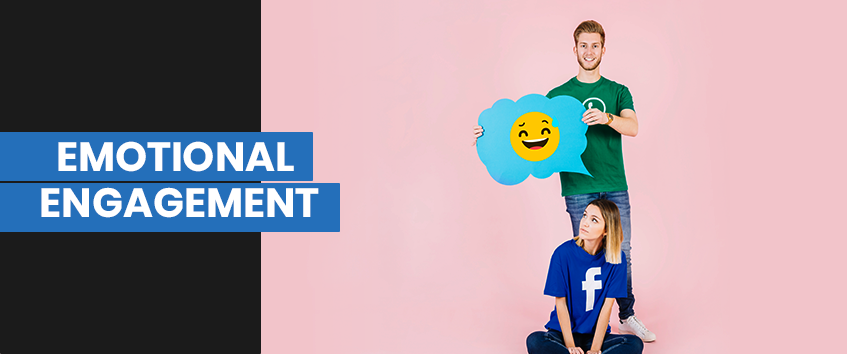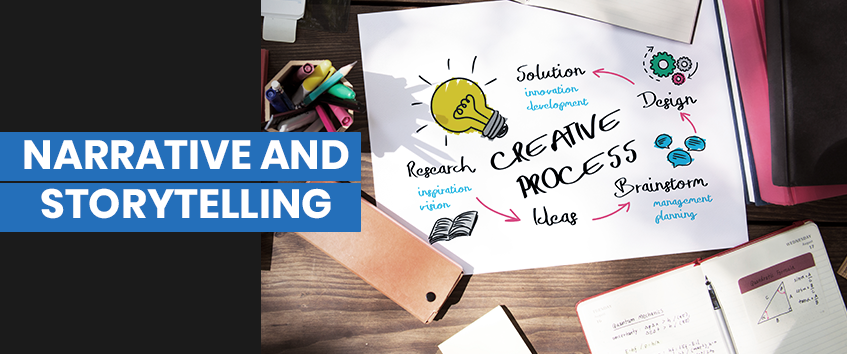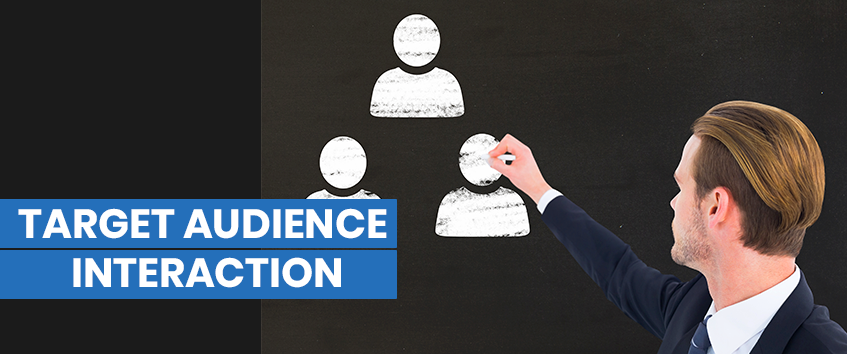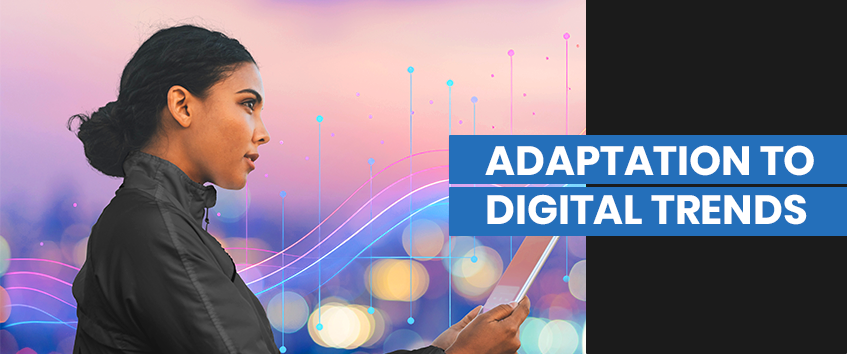Out of the Box | How Unconventional Tactics Outshine Safe Strategies
January 28, 2025
Unconventional marketing campaigns often outshine traditional advertising strategies by leveraging human psychology, media dynamics, and competitive advantage. These campaigns stand out for their ability to capture and maintain audience attention in a saturated media landscape. Here, we explore why these innovative approaches often lead to greater success.
Innovative campaigns cut through the clutter with their distinctiveness, seizing attention and creating a lasting impression. They provoke stronger emotional responses through engaging, surprising, or even challenging content, which strengthens the bond between the brand and its consumers. This emotional connection not only fosters brand loyalty but also encourages social sharing, helping clients stay competitive by reducing marketing complexity.
By connecting with audiences on a personal level, these campaigns use powerful storytelling to enhance the recall and impact of the marketing message. Additionally, many such campaigns invite audience interaction, transforming passive viewers into active participants and brand advocates.
From a cost perspective, unconventional strategies often require a lower financial investment than traditional media buys, while offering potentially higher returns through viral sharing and organic growth. By aligning closely with digital and cultural trends, these campaigns can quickly adapt to shifts in consumer behaviour, providing a competitive edge for a digital marketing company in Kochi.
Furthermore, even when unconventional campaigns don’t meet their goals, they provide valuable insights into consumer behaviour and market trends. These insights are crucial for refining future strategies and keeping the brand relevant and responsive to market changes.
By embracing creativity and innovation, unconventional marketing campaigns achieve stronger engagement and a more significant impact, proving to be a vital tool in the modern marketer’s toolkit.
Standout Factor

In today’s saturated advertising world, standing out is crucial. Unconventional marketing campaigns excel with their standout factor—their ability to cut through traditional ad clutter with something different and unexpected. This approach captures attention, enhances recall, and boosts brand awareness, leading to more effective marketing outcomes.
Unconventional campaigns distinguish themselves by deviating from the norm. While traditional advertising often follows predictable patterns that blend into the media background, introducing something novel—through creative content, an unusual format, or unexpected delivery—disrupts the viewer’s routine and captures their attention. This disruption serves as a powerful hook, compelling deeper engagement with the message.
Uniqueness in a campaign can generate curiosity and intrigue, as humans are naturally drawn to the new and different. Campaigns that challenge conventional norms or present surprising twists can engage the audience more profoundly than standard advertisements, crucial in a market where differentiation is key to visibility. For example, using augmented reality to bring a product to life or incorporating user-generated content in unexpected ways can create a buzz that extends well beyond the initial interaction.
Memorability is another critical aspect of the standout factor. Unique and memorable advertisements are more likely to be recalled amidst a sea of marketing messages, increasing the likelihood of conversion and keeping the brand top-of-mind.
Emotional resonance further enhances these campaigns’ effectiveness. Unconventional advertising often leverages emotions more effectively by creating unexpected and engaging narratives or experiences that resonate personally with audiences. This emotional engagement not only boosts memorability but also strengthens the bond between the brand and its consumers. When consumers feel an emotional pull, they are more likely to develop a preference for the brand, translating into loyalty and advocacy.
The standout factor is amplified by the shareability of unconventional campaigns. In the digital age, novel and memorable content is more likely to be shared across social networks, amplifying the campaign’s reach far beyond what could be achieved through paid advertising alone. Social sharing adds a layer of endorsement, as peer recommendations are often perceived as more trustworthy than direct brand messages.
The defining characteristic of unconventional marketing campaigns is their multifaceted advantage; they break through the clutter by providing innovative and novel experiences that capture attention, evoke emotional engagement, and leave a lasting impression. This approach not only raises brand awareness more effectively but also builds a lasting relationship with the audience. By understanding and leveraging the power of being different, brands can craft campaigns that attract attention in the short term and foster enduring consumer loyalty.
Emotional Engagement

Emotional engagement is fundamental to effective marketing, and unconventional campaigns excel by eliciting strong responses such as surprise, joy, or controversy. This blog explores how emotional engagement enhances recall, shareability, social media interaction, and virality—advantages often unattainable with traditional ads.
By evoking strong emotions, unconventional campaigns transform passive viewers into active participants, creating deeper engagement. These emotionally charged experiences, through poignant narratives or striking visuals, connect personally with audiences, increasing their impact and relatability. For instance, a humorous take on a sensitive issue or an inspiring story can leave a profound impression.
Controversy also plays a significant role in emotional engagement. Although risky, it can ignite widespread discussion and media coverage, boosting a brand’s visibility and establishing it as a thought leader. Such engagement often leads to debates that enhance the campaign’s reach and the brand’s market presence.
Social media is crucial in the success of emotionally engaging campaigns. Content that triggers strong emotions is more likely to be shared, liked, and commented on, achieving organic reach beyond traditional efforts. This virality acts as an endorsement, adding credibility and attracting a wider audience that may convert into loyal customers.
Moreover, emotional connections foster customer loyalty. When consumers develop a strong emotional bond with a brand, their loyalty extends beyond product satisfaction to genuine affection and advocacy. This bond is more effective in retaining customers than conventional strategies because it taps into deeper, more personal interactions.
Emotional engagement through unconventional marketing offers substantial benefits by provoking strong reactions that boost memorability and encourage sharing. These campaigns not only increase social sharing but also strengthen the bonds between the brand and its consumers. In a competitive market, the ability to connect emotionally can be crucial for a brand’s success. Leveraging emotions in marketing distinguishes a brand and fosters enduring customer relationships and loyalty.
Narrative and Storytelling

In today’s marketing landscape, storytelling is essential, particularly within unconventional campaigns that deeply resonate with audiences. This approach makes brands more relatable and memorable, aligning with consumer preferences for authentic narratives.
Storytelling in marketing, though not new, takes on a fresh dimension in unconventional campaigns. Unlike traditional marketing that often relies on direct sales messages, these campaigns use storytelling to encapsulate ideals, evoke emotions, and convey human experiences, going beyond simple product promotion. This method deeply engages consumers by appealing to both their emotions and intellect, fostering a strong connection with the brand.
The effectiveness of storytelling is amplified when narratives subvert expectations or introduce unique elements. For example, a campaign that begins with a standard consumer scenario but incorporates surreal elements can ignite curiosity and boost engagement as viewers decipher the underlying message.
Today’s consumers seek genuine content that reflects their values, making storytelling a key tool for building trust and loyalty. Brands that share stories resonating with consumers’ lives and aspirations can forge deeper connections, enhancing engagement.
Successful storytelling in unconventional campaigns typically utilizes diverse media formats, including immersive videos, interactive websites, and engaging social media platforms. These platforms allow the narrative to unfold in impactful ways, enhancing memorability and resonance.
Additionally, engaging stories promote consumer participation through social media interactions, content sharing, or direct contributions to the narrative. This not only extends the campaign’s reach but also deepens the consumer-brand relationship, potentially turning customers into brand advocates.
By leveraging compelling storytelling, unconventional marketing campaigns strategically connect with audiences, crafting narratives that challenge traditional expectations and give brands a competitive edge in a market that values authenticity and engagement. Ultimately, storytelling in marketing is about creating experiences that consumers want to be part of, building lasting relationships, and fostering brand loyalty.
Target Audience Interaction

In the dynamic world of marketing, the shift from traditional advertising to interactive and participatory campaigns marks a significant evolution in brand engagement strategies. Unconventional campaigns that foster audience interaction transform viewers from passive recipients into active participants, enhancing campaign impacts, boosting user engagement, and strengthening relationships between brands and their consumers. This innovative and forward-thinking approach typifies the strategy of leading social media marketing companies in Kerala.
At the core of interactive marketing lies the ability to immerse the audience in the narrative or activity. Technologies like virtual reality (VR) and augmented reality (AR) engage multiple senses to create captivating experiences that not only capture attention but also leave a lasting impression. VR transports users to different worlds, while AR enhances the real world with digital information, deepening consumer interaction with the brand.
User-generated content (UGC) campaigns encourage consumers to create and share their own content related to the brand, lending authenticity to the marketing efforts and expanding reach organically. This method fosters a stronger personal connection to the brand, enhancing loyalty and trust.
Interactive digital platforms like online polls, quizzes, or games integrate brand messages in engaging formats. For instance, a brand might create a game that incorporates product information, simultaneously educating and entertaining the player. These platforms not only provide entertainment but also valuable educational content about the brand, boosting consumer knowledge and engagement.
The benefits of interactive campaigns extend beyond mere engagement. They create an environment where consumers feel valued and heard, crucial for building brand affinity. Involving the audience in content creation or decision-making allows brands to gather direct feedback and insights, instrumental in shaping future marketing strategies and product developments.
Participatory campaigns often lead to higher levels of customer satisfaction and advocacy. When consumers actively participate in a campaign, they are more likely to share their experiences, effectively becoming brand ambassadors. This organic spread of the brand message increases the campaign’s reach and effectiveness without substantial advertising spend.
By turning passive viewers into active participants, unconventional campaigns utilize the power of interaction to enhance engagement and strengthen consumer relationships. These campaigns not only boost marketing impact but also build a community around the brand. As the digital landscape evolves, adopting interactive marketing strategies will be key to capturing consumer attention and fostering long-term loyalty in a competitive market.
Cost-Effectiveness

Unconventional marketing strategies often provide a cost-effective alternative to traditional media buys, leveraging guerrilla marketing, viral social media content, and word-of-mouth campaigns to achieve significant reach and impact at a fraction of the cost.
Guerrilla Marketing Tactics: Known for its efficiency, guerrilla marketing uses creativity and surprise instead of a large budget. Tactics like street art, pop-up events, and on-the-ground activations draw public attention in everyday settings, creating memorable experiences that generate organic buzz and media coverage, all without costly media placements.
Viral Social Media Content: This strategy utilizes digital platforms to reach large audiences quickly and at minimal cost. By crafting emotionally resonant, shareable content, these campaigns promote organic sharing, amplifying reach far beyond the capabilities of traditional media. Viral campaigns engage consumers effectively, capitalizing on where they spend much of their time.
Word-of-Mouth Campaigns: Relying on personal recommendations, word-of-mouth is a low-cost, highly effective marketing form. Modern tactics may include incentives for customers to share their experiences on social media or with friends, spreading the brand message organically and building trust through credible personal endorsements.
Targeting and Agility: Unconventional strategies excel in precisely targeting specific demographics, thanks to sophisticated digital tools. This tailored approach minimizes waste and enhances engagement with the most responsive audience segments. Additionally, these strategies are agile, allowing campaigns to be quickly launched and adjusted based on real-time feedback, which optimizes performance and reduces costs relative to traditional media’s rigid structures.
While not always less expensive, unconventional marketing strategies frequently result in cost savings over traditional media buys. By employing creative, targeted, and flexible approaches, brands can achieve extensive reach and robust engagement without the substantial financial burden of traditional advertising. As media consumption habits continue to evolve, the cost-effectiveness and adaptability of these unconventional methods make them an increasingly attractive option for maximizing marketing budgets.
Adaptation to Digital Trends

By swiftly adapting to digital and cultural trends, unconventional marketing campaigns connect more effectively with consumers, gaining a competitive edge. These campaigns thrive in the fast-paced digital landscape, where trends can gain prominence almost overnight, driven by social media and online communities. Their keen sense of digital culture allows them to integrate the latest trends, directly addressing the interests and values of their target audiences, making their efforts timely and resonant.
One significant advantage of unconventional marketing is its agility. Unlike traditional strategies, which involve lengthy planning and production cycles, unconventional methods can be launched and adapted quickly as trends evolve. This flexibility enables brands to capitalize on trends at their peak, maximizing engagement and impact.
Unconventional campaigns often utilize cutting-edge technologies like augmented reality (AR), virtual reality (VR), and interactive web experiences, offering immersive and engaging ways for consumers to interact with a brand. For instance, a fashion brand using AR for virtual try-ons aligns with trends towards interactive and personalized shopping experiences.
Cultural trends also heavily influence these campaigns, reflecting shifts in societal values and behaviours. By understanding and integrating these shifts, brands can create campaigns that resonate deeply on an emotional level. For example, campaigns promoting sustainability can attract environmentally conscious consumers.
Additionally, these campaigns are typically experimental and open to risk-taking, often leading to innovative marketing tactics that set trends. Brands seen as pioneers in new techniques can gain a reputation as industry leaders, attracting media attention and consumer loyalty.
The ability to seamlessly integrate into the digital and cultural fabric makes unconventional campaigns especially effective at engaging younger demographics, who value authenticity and responsiveness. By embracing agility, leveraging new technologies, and responding to cultural shifts, these campaigns capture attention and foster deeper engagement and loyalty. As consumer behaviours and digital landscapes rapidly evolve, the capacity to adapt quickly remains a critical success factor for brands in a competitive market.
Highlighting Brand Personality

By providing a distinctive platform for brands to vividly showcase their personality, values, and vision, unconventional marketing campaigns help distinguish them in a saturated market. This approach fosters deeper identity connections, cultivating a loyal customer base.
Effective branding hinges on showcasing a distinct personality. Traditional marketing often focuses on product features or business capabilities, but unconventional campaigns break these bounds, using bold, innovative methods to dynamically present a brand’s core values and vision. This approach fosters a narrative in which consumers can participate and contribute, enhancing the brand’s authenticity.
This authenticity is crucial in today’s market, where especially younger consumers are sceptical of advertising and gravitate towards brands that show a genuine commitment to their values. By embodying these values through creative marketing, brands can differentiate themselves from those still using traditional—and often perceived as insincere—methods.
Additionally, campaigns that effectively showcase a brand’s personality forge emotional connections with consumers. Seeing a brand consistently express its unique identity and uphold its values fosters consumer trust and loyalty, based not just on product utility or price, but on shared values and vision. This emotional bond turns customers into advocates who extend the brand’s reach through word-of-mouth and social sharing.
The impact of these personality-driven campaigns is amplified on social media and digital platforms, where brands can interact with consumers in real time. This immediate, interactive environment allows brands to continuously reinforce their identity and respond to feedback, maintaining a constant presence in consumers’ lives. This ongoing engagement is vital for securing and deepening relationships in a digital age where brand loyalty is hard to maintain.
By embracing creativity and risk, unconventional marketing campaigns offer a powerful way for brands to authentically and impactfully communicate their identity. As the marketplace becomes more saturated, the ability to convey a genuine and compelling brand personality will increasingly influence a brand’s success in attracting and retaining consumers.
Learning Opportunities

Even when they fall short of their intended outcomes, unconventional marketing campaigns often provide valuable learning opportunities. By pushing the boundaries of traditional marketing with innovative approaches, these campaigns can provide deep insights into consumer behaviour, preferences, and broader market dynamics, informing future strategies more effectively.
Experimental by nature, these campaigns test the waters with novel stimuli, offering a real-world testing ground that challenges existing perceptions and enhances our understanding of consumer psychology. For instance, a campaign utilizing a new technology may not go viral but can still show how open the target audience is to such innovations, guiding future integration of technology.
These insights are especially valuable as they derive from genuine interactions with the audience. Unlike traditional campaigns that often reaffirm what is already known, unconventional strategies probe deeper, revealing nuanced audience behaviours and preferences. This data, gathered through advanced digital tracking tools, can uncover how different audience segments engage with the campaign, spotlighting niche markets or under-served demographics for targeted marketing efforts.
Moreover, these campaigns act as a litmus test for the current market environment, showing how cultural, economic, or social shifts affect consumer attitudes. Insights gained during different economic climates, for example, can inform adjustments in pricing or promotional tactics.
Additionally, less successful unconventional campaigns promote a culture of resilience and innovation within a brand. They underscore the importance of risk-taking and creativity, crucial for maintaining competitiveness and fostering innovation.
Unconventional campaigns are invaluable for the deep market insights they provide, which help brands refine their strategies, better understand their audience, and maintain a competitive edge. By challenging the status quo and testing consumer responses, these campaigns not only gather unique insights but also deepen a brand’s understanding of an evolving market. This approach is crucial for the long-term success and adaptability of a brand, particularly for those working with the best digital marketing company in Kochi. These insights enable companies to stay ahead in a rapidly changing digital environment, ensuring they remain at the forefront of innovation and market relevance.
By engaging audiences in unexpected and emotionally charged ways, unconventional campaigns often surpass traditional strategies. These campaigns harness the element of surprise and tap into emotions to create lasting impressions, deepening the connection to the brand. By leveraging interactive and digital media, they transform passive viewers into active participants, enhancing engagement and the overall impact of marketing efforts.
These dynamic tools help unconventional campaigns resonate more deeply with audiences, often leading to increased participation and virality. In a crowded market, their ability to forge genuine emotional connections distinguishes these campaigns, making them more effective and successful. The success of unconventional campaigns highlights their crucial role in modern marketing strategies, proving that innovation and emotional engagement can drive significant results.
